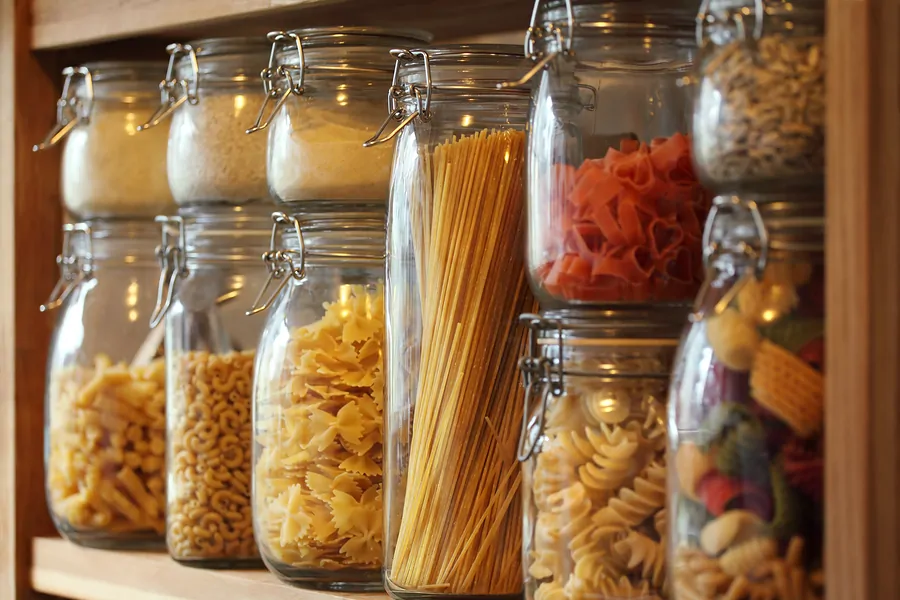This post may contain affiliate links. Read my disclosure policy here.
This guest post was submitted by Casey.
Building up an emergency supply of food can be affordable with the right planning. With as little as ten dollars every week, you can purchase and store a wide range of non-perishable items, such as pasta and rice, as well as freezer foods. To begin, you will want to plan your purchases to get the best deals for your dollar.
The First Step
Food storage is a good way to save money on food over time, and can be very useful in the case of an emergency, such as a natural disaster. It is important to know what to buy in order to stretch your dollar. However, just because something is cheaper doesn’t mean that you should buy it. The first thing to consider is whether or not your family will eat the product, and how long the product can be stored without spoiling.
When planning to buy foods for long term storage, look for ways to save a little money that can be directed toward your emergency pantry supplies. Use the money that you save for items that will last for a long time in your storage closet. Foods with a long shelf life are also relatively inexpensive. For instance, you can purchase five pounds of dried beans for under ten dollars, and ten pounds of rice for under ten dollars. Start with the basics, then work up to purchasing more expensive items, such as powdered spices and drink mix.
How to Stick to Your Budget
Ten dollars a week isn’t a lot of money, but it is enough to begin your own emergency food storage system. Look for items such as rice, pasta, and dehydrated food on sale, and purchase in bulk when you can. You should also include drinks, such as powdered drink mix, that can be stored for an extended period of time without spoiling. For storage you can buy lidded buckets from a local discount store to keep foods such as bulk sugar, flour, beans and rice in. Lidded buckets are inexpensive and make excellent food storage containers. You can also recycle and use empty containers from other food products that you have used up.
Making a list of foods that fit your needs is the best way to begin a food storage plan. Beginning with bulk supplies of dried and dehydrated foods that have a high malnutrition value is ideal. Beans, brown rice, flour, and vegetables are a good place to begin because these foods can be stored for a long period of time and are very inexpensive to buy, even when buying in bulk.
Do you store certain foods in your pantry? What are your best tips for starting a food storage pantry?










BusyWorkingMama says
I have a large walk-in pantry with a sink and extra dishwasher and lots of room. I do stock up on certain foods, and keeping non-perishables on hand helps cut down on grocery trips! My go-tos are jarred pasta sauces, pastas, rice and beans.